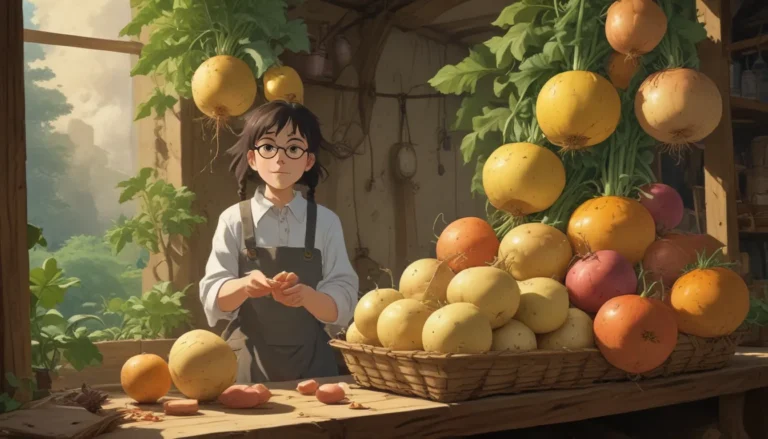Understanding and Managing Cabbage Black Rot: A Comprehensive Guide for Gardeners

Are you a fan of growing your own vegetables in the garden? Do you have a soft spot for brassicas such as bok choy, broccoli, cauliflower, kale, and turnip greens? If so, chances are you’re familiar with the dreaded cabbage black rot disease caused by Xanthomonas campestris pv. campestris (or Xcc) bacteria.
In this detailed guide, we will delve deep into understanding cabbage black rot, exploring ways to prevent it, and what to do if an outbreak occurs. So, grab a cup of coffee, sit back, and let’s dive into the world of brassica-battering bacteria.
What You’ll Learn:
- The Ins and Outs of Cabbage Black Rot
- Strategies for Avoiding Infection
- Managing the Damage
The Ins and Outs of Cabbage Black Rot
Picture this: you’re strolling through your garden, admiring the lush green leaves of your cabbage plants. Suddenly, you notice yellow or chlorotic patches at the edges of the leaves, forming V-shapes that align with the veins. What you’re seeing is the early stages of cabbage black rot.
As the disease progresses, the affected leaf tissue turns brown, dry, and ultimately dies. The bacteria exude a sweet, sticky substance called xanthan, which turns the veins black and rotten. This process is why the disease is aptly named “black rot.”
If left unchecked, black rot can wreak havoc on your cabbage crop, starting from the soil level and working its way up to the stem and roots. To make matters worse, the bacteria can be spread through guttation, those tiny drops of sap that plants release overnight.
Strategies for Avoiding Infection
Now that we understand the severity of cabbage black rot, it’s time to explore measures to prevent its spread in our gardens.
-
Start with Resistant Seed: Invest in disease-resistant seed varieties that are less susceptible to black rot. Heat-treating seeds in 122°F water for 25 minutes can help destroy any bacteria present.
-
Maintain Garden Hygiene: Regularly weed your garden and remove plant debris to deter insect vectors that can spread diseases. Rotate your cabbages and other cruciferous veggies every two to three years to minimize the risk of infection.
-
Manage Moisture: Avoid overwatering your plants, especially in humid conditions that promote bacterial growth. Water the soil directly and refrain from splashing water on the leaves to reduce the risk of contamination.
-
Apply Preventative Treatments: Consider using copper-containing antibacterial treatments on your plants as a preemptive measure against black rot. Treat infected plants at the first sign of symptoms to inhibit the disease’s spread.
-
Practice Damage Control: If you do encounter an infected plant, wear protective gear, remove and dispose of it properly, and sanitize your gardening tools to prevent further contamination.
Managing the Damage
In the unfortunate event of a black rot outbreak in your garden, it’s essential to act swiftly to contain the spread and minimize the damage.
-
Remove Infected Plants: Dig up and dispose of infected plants in sealed plastic bags to prevent the bacteria from spreading. Sanitize your gardening equipment with a bleach solution to avoid cross-contamination.
-
Apply Preventative Treatments: Treat neighboring plants with copper-containing solutions to halt the disease’s progression and protect healthy foliage.
-
Practice Caution: Refrain from consuming any leaves showing signs of disease, such as discoloration, rotting, or foul odors. When in doubt, seek guidance from your local agricultural extension service for expert advice.
A Little TLC to Beat the Dreaded Xcc
In conclusion, a little tender loving care goes a long way in safeguarding your cabbage crop from the perils of black rot. Here’s a quick recap:
- Start with disease-resistant seed and consider heat treating them.
- Maintain a clean garden environment to prevent disease vectors.
- Ensure proper moisture management to avoid bacterial growth.
- Apply copper-containing treatments preventatively and at the first sign of symptoms.
- Have a proactive plan in place to protect your cabbage patch from black rot outbreaks.
Remember, cabbage black rot is a severe disease that can devastate your cruciferous vegetables. By implementing these preventative measures and acting swiftly in the face of an outbreak, you can nurture a healthy and vibrant garden.
Have you encountered black rot in your cabbage patch? Share your experiences and insights in the comments below. Your knowledge could help fellow gardeners navigate this challenging disease.
If you found this guide helpful, check out our recommendations for growing cabbage, dealing with common cabbage pests, and identifying and treating other cabbage diseases.
Stay Vigilant, Stay Healthy: Protecting Your Cabbages from Black Rot
As gardeners, our role extends beyond planting and harvesting. We are stewards of the land, nurturing our plants and protecting them from harm. By understanding and managing cabbage black rot, we can create a resilient and thriving garden for seasons to come.
Remember, with knowledge, care, and a bit of preventative action, you can shield your precious brassicas from the dreaded Xcc bacteria. Happy gardening!





